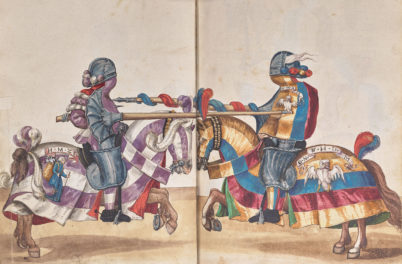No other medium shows the evolution of artistic ideas like drawing. Learn how master and contemporary artists draw over lines, reposition figures, and cut and paste parts of their work during the dynamic process of drawing.

An artist’s thought process made visible: Four Studies of Heads Drawn over a Copy of Saint John the Evangelist by Correggio, about 1585, Annibale Carracci and/or Lodovico Carracci. Black chalk (recto); black and red chalk (verso), 10 7/8 × 8 1/8 in. The J. Paul Getty Museum, 85.GB.218
More to Explore
Drawing: The Art of Change exhibition information
Transcript


LENA: When I need to figure something out in my head I draw.
WYNTON: I draw constantly, everywhere I go.
SANDY: For me every drawing is a process of discovery.
The beauty of drawing is that you can see the process. And see the artists working and thinking through a composition.
When you look at old master drawings by an artist like da Vinci or Géricault, you can still see them trying to capture the right line, the right movement, there on the page even hundreds of years later.
When artists draw, they often correct their first lines, and these changes can usually be seen in the final drawing. Art historians even have a word for these corrections and changes, “pentimenti.” In Italian, the word can connote regret or remorse. But a broader meaning is a reconsideration, a second thought or a changing of mind. The artist might be exploring composition or emotion or expression.
There is this wonderful drawing by the Italian artist Pontormo, where you can still see the first figure he drew on the piece of paper, a standing woman. Then he decided to draw another subject altogether, but the first figure is still there creating volume and support for the dying Christ.
LENA: I love that in many drawings, you can see the artist change his or her mind. Sometimes you go up to a piece of art and you’re like how was this made, how did this even happen? But with drawing, if you can see the lines, you can see that they had to work for it and change a lot. And they have a process and it’s not just like magic, and it doesn’t come out right away. [LAUGHS]
I love drawing faces because it’s like something you look at every day, so it’s something you’re very familiar with. This line didn’t really work out, and so I’m just going to go over it with a darker color so I can distinguish it from the first round of lines.
SANDY: When the drawing is just not working out, you can keep tweaking it and pushing it, or just drawing over it until it feels right. But sometimes you just can’t make big enough changes by drawing over, like when Rembrandt cut and pasted a jagged slice of paper on top of his overworked drawing so he could start from scratch.
WYNTON: When drawing on the computer I can cut and paste. I can ink and transform and move parts of the drawing. And it is much more efficient than doing it by hand.
SANDY: I might try to hide or cover up a change, but I might not. Sometimes I like leaving them in. Keeping these changes, these pentimenti, gives a liveliness and dynamism that’s unique to drawing.
WYNTON: Sometimes unplanned marks make the drawing look better or create a new line that actually improves it, something you can work with and draw over to create the drawing closer to what you planned.
LENA: When you see lines underneath, it makes me feel more comfortable as an artist knowing that I can get there, too. And you understand it a little bit more. It makes you more in awe of what they’ve done because you know the steps they took.
LENA: When I need to figure something out in my head I draw.
WYNTON: I draw constantly, everywhere I go.
SANDY: For me every drawing is a process of discovery.
The beauty of drawing is that you can see the process. And see the artists working and thinking through a compositio...




I really appreciated the steps that were presented in drawing a figure and the multiple corrections that are made before the artist is satisfied with the final product. I recognized Sandy drawing. She is so talented.